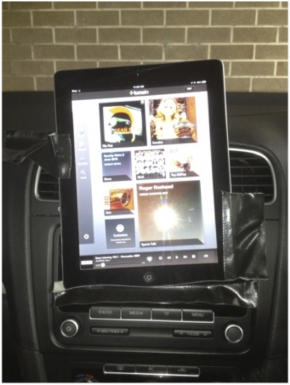Wayne Stamm’s opinion piece has been accepted in our Win a Trip to the US RadioShow competition.
While the industry hype around Digital Radio continues, it is becoming much clearer that the move to digital is industry driven and not consumer supported.
The findings from the NAB conference in Las Vegas this year indicate that, unless consumers get involved, Digital Radio could flounder before it gets a chance to move into regional areas.
What should be alarming radio professionals in this country is that internet connected cars have arrived with little or no fanfare. Already GMH is advertising two models with internet connectivity through their own in-dash systems and this doesn’t take into account the number of cars connecting with Smartphones via cable or Bluetooth. Internet connectivity in cars isn’t coming, it is already here.
Globally, TuneIn Radio is being downloaded 200,000 times per day, giving traditional radio listeners the biggest selection of radio programming they have ever had.
Consumers are now demanding internet access for their cars with interaction to social media like Facebook and Twitter at the top of their list. Legislators have a real concern about the safety of drivers who are being distracted by SMS and hand held mobile phones, let alone the prospect of them posting to Facebook or Twitter.
But what consumers are not demanding is Digital Radio. And unlike the move to Digital TV, there is no plan to shut down FM radio.
So what is happening with Digital Radio, or HD radio in the USA? A number of car manufacturers in America are about to commit to 100% support for HD radio but still don’t expect much more than 25- 30% penetration by then end of 2016. There is an uptake in the number of HD radio users simply because these listeners have access to HD, but there is no demand from listeners for HD sets in their cars. What they do want is Wireless Internet connection from their car’s inbuilt stereo system, but in the meantime are happy to settle for their Smartphone to make that connection.
Here in Australia there is plenty of commercial radio industry support for Digital Radio, but again, little consumer demand. Despite campaigns seeking to whip up a frenzy of support in regional areas the current government is nonplussed about getting Digital Radio into non-metropolitan communities.
The Community Broadcasting Association of Australia is also trying to get its members excited about Digital Radio. The CBAA has a huge government shortfall in funding and a seemingly bigger shortfall in forward planning for on-going costs of the digital infrastructure. Only 37 metropolitan Community Broadcasting stations have moved to Digital Radio. Most of their country cousins are not the slightest bit interested in Digital Radio for two reasons, establishment costs and on-going costs.
When asked about a lack of government Digital Radio funding for the CBAA, the Minister for Communications, Stephen Conroy, said recently: “The primary source of funding for community broadcasting, however, has always been and should continue to be drawn from sponsorship and donations from within those communities, independent of government support.
“The government is proud to augment this funding, but it should never be seen as a substitute for independent community-sourced revenue.”
He left no doubt that the Government was not going to continue with any long term support.
The CBAA’s only response was to urgently seek talks with the minister.
Across provincial areas some Community broadcasters exist on yearly revenue of under $25,000, nowhere near enough to allow them to fund what they are beginning to see as the Digital Radio folly. A number of staff at these stations were around when AM Stereo spectacularly failed in the 80’s and they see Digital Radio as just another poorly thought out move.
Digital Radio will not save stations when consumers now have access to almost any radio station in the world, 24 hours a day. For those accessing radio on their mobile devices bandwidth will continue to improve and the 4GLTE network is expected to be much faster than 4G. Algorithms and codecs are making continual advancements and will continue to improve bandwidth accessibility.
And improving bandwidth is likely to be a software upgrade, not a replacement of hardware, and that is one more nail into the coffin of the Digital Radio revolution.
The good news?
Content will continue to be king and those stations that get it right will continue to flourish, with the rest in danger of becoming nothing much more than a distant memory. Listeners still want one on one communication with their radio station. They get tired of their own playlists quickly and miss human interaction on services like Pandora. They still want news, weather, traffic and personalities. They like to actively participate via Twitter, Facebook and the Web…and they don’t need Digital Radio to do it, just their Smartphone.

This op-ed piece, submitted by Wayne Stamm of Newcastle, has been entered in our US RadioShow competition.
We welcome reader comments below, or why not write your own article and enter it in the competition. Details here.

